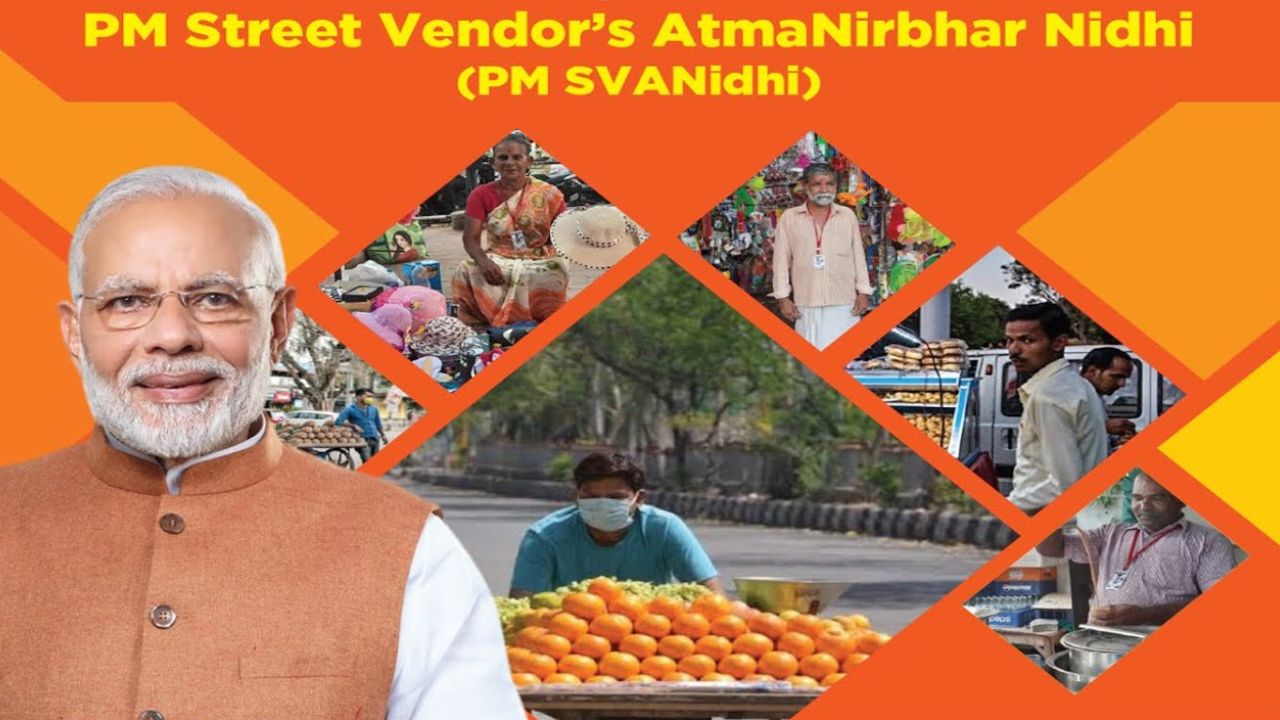Walk down any bustling street in an Indian city, and you’ll feel the vibrant energy of its informal economy. A huge part of this energy comes from street vendors—the sabziwalas (vegetable sellers), the chaat stalls, the flower sellers, and the cobblers. They are the backbone of urban life, providing essential goods and services. However, the COVID-19 pandemic and the subsequent lockdowns dealt a devastating blow to their livelihoods, wiping out their meager working capital and leaving them with no means to restart.
In this moment of crisis, the Government of India launched a crucial lifeline: the PM Street Vendor’s AtmaNirbhar Nidhi (PM SVANidhi) scheme on June 1, 2020. This wasn’t a handout, but a “hand-up.” It’s a special micro-credit scheme designed to provide quick, affordable, and collateral-free loans to help street vendors get back on their feet and become self-reliant.
What is PM SVANidhi? The Lifeline for Street Vendors
- Full Name: PM Street Vendor’s AtmaNirbhar Nidhi (PM SVANidhi)
- Launched: June 1, 2020
- Ministry: Ministry of Housing and Urban Affairs (MoHUA)
- The Goal: To provide collateral-free working capital loans to street vendors to help them resume their businesses and to create a pathway for their economic upliftment.
- Key Idea: To bring this traditionally excluded group into the fold of formal finance and to encourage their participation in the digital economy.
How Does the Scheme Work? The Key Features
PM SVANidhi is packed with unique features designed specifically for the needs of street vendors.
1. The First Loan: A Quick Start
Eligible street vendors can get an initial working capital loan of up to ₹10,000. This loan is completely collateral-free, meaning they don’t need to provide any security or guarantee to get it.
2. Climbing the Credit Ladder
This is one of the most innovative parts of the scheme. It rewards good credit behavior.
- If a vendor repays the first loan of ₹10,000 on time, they become eligible for a second, larger loan of up to ₹20,000.
- If they repay the second loan on time, they can then access a third loan of up to ₹50,000. This creates a clear path for them to grow their business by building a positive credit history.
3. Interest Subsidy
To make the loans even more affordable, the government provides an interest subsidy of 7%. If a vendor makes their repayments on time, the subsidy amount is credited directly to their bank account every quarter.
4. A Push for Digital Payments
The scheme smartly encourages vendors to go digital. To promote the use of digital payments like UPI through QR codes, the scheme offers a monthly cashback to vendors for every digital transaction they make. This not only provides an extra income but also helps them build a digital footprint, which can help in getting bigger loans in the future.
The Human Touch: Restarting a Livelihood
Rekha used to sell delicious poha from a small cart every morning in a busy market. The lockdown forced her to shut down, and she used up all her small savings just to feed her family. When the city started opening up again, she had no money to buy the raw materials—the poha, onions, and spices—to restart her business.
She heard about the PM SVANidhi scheme from a municipal officer. With the help of a Common Service Center operator, she applied online. Within ten days, ₹10,000 was credited to her Jan Dhan account. That money was her lifeline. She immediately went to the wholesale market and bought everything she needed.
The bank also helped her set up a QR code for payments. Initially, she was hesitant, but when she saw a cashback of ₹50 credited to her account at the end of the month, she was thrilled. She repaid her loan diligently and is now eligible for the ₹20,000 loan, which she plans to use to add a tea stall to her cart. The scheme didn’t just give Rekha a loan; it restored her dignity and her dream of being a small business owner.
Impact and Challenges
The scheme was rolled out at an incredible speed and has had a massive impact.
Impact
PM SVANidhi has been one of the fastest-growing micro-credit programs in the world. Over 50 lakh loans have been disbursed, providing critical support to street vendors across the country. One of its biggest successes has been the large-scale onboarding of street vendors onto digital payment platforms, accelerating the vision of a Digital India.
Challenges
- Reaching Every Vendor: The biggest challenge is to identify and reach every eligible street vendor, as many of them are not formally registered with any municipal body.
- Bank Hesitancy: In the initial phase, some bank branches were hesitant to lend to this segment without any collateral, which required continuous persuasion and monitoring from the government.
- Digital Literacy: While the cashback incentive is effective, ensuring that vendors are comfortable, confident, and safe while using digital payment tools requires ongoing financial literacy efforts.
Conclusion
The PM SVANidhi Scheme is a powerful example of a timely, targeted, and empathetic government intervention. It provided crucial support to one of the most vulnerable sections of the urban informal economy at their time of greatest need. By combining access to credit with a savvy push for digital adoption, the scheme has not only helped restart livelihoods but has also paved the way for the financial inclusion and formalization of street vendors. It is a true embodiment of the principle of AtmaNirbharta (self-reliance), recognizing and empowering the micro-entrepreneurs who keep our cities running.
